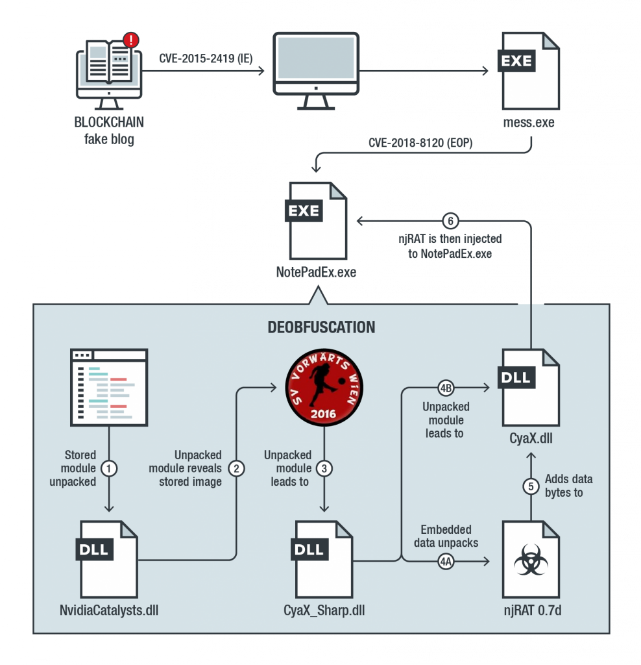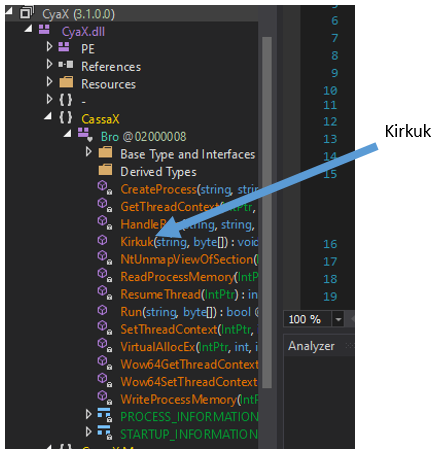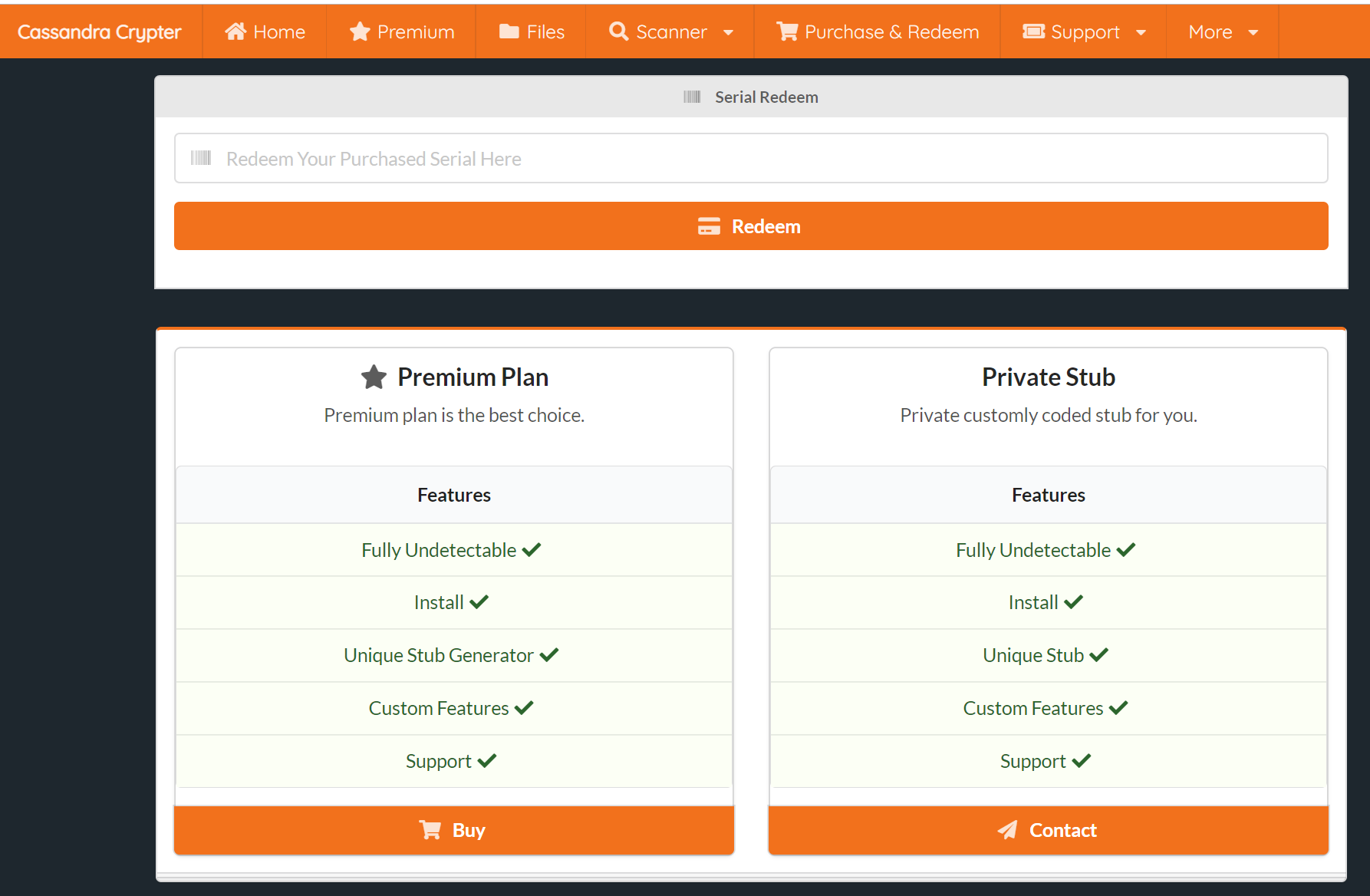Obfuscation Tools Found in the Capesand Exploit Kit Possibly Used in “KurdishCoder” Campaign

by William Gamazo Sanchez and Joseph C. Chen
In November 2019, we published a blog analyzing an exploit kit we named Capesand that exploited Adobe Flash and Microsoft Internet Explorer flaws. During our analysis of the indicators of compromise (IoCs) in the deployed samples that were infecting the victim’s machines, we noticed some interesting characteristics: notably that these samples were making use of obfuscation tools that made them virtually undetectable.
After some data collection we found more than 300 samples that correlate to the mentioned indicators that were recently very active our first detections occurred in August, with the campaign itself still ongoing (having occasional spikes in between). We saw a rising usage of tools that provide fully-undetectable obfuscation capabilities – signifying that the authors behind the samples designed their malware variants to be as stealthy as possible. We decided to name the potential campaign associated with these IoCs as “KurdishCoder”, based on the property name of an assembly module found in one of the samples.
We took a look at one of the samples captured from Capesand that was used to deploy the njRat malware – notably its main executable NotepadEx. We found that were multiple layers of obfuscation using a combination of two tools: the .NET protectors ConfuserEx and Cassandra (CyaX). Both of these tools are used in combination to provide an array of fully undetectable capabilities to the deployed njRat malware variant.
Examining the Capesand samples
The simplified diagram taken from the previous blog shows the combination of ConfuserEx and Cassandra via the second layer of obfuscation protection, which involves the DLL CyaX_Sharp Assembly (both CyaX_Sharp and CyaX are part of the Cassandra protector).

Figure 1. The infection chain for Capesand that also shows the obfuscation mechanisms
For this particular sample, CyaX_Sharp is obfuscated with a customized version of ConfuserEx. The following image shows an assembly module property that was generated for this sample.

Figure 2. The generated assembly module property
The module’s property name is “KurdishCoderProducts”, with a value shown to be “ConfuserEx v1.0.0-custom”. To understand where this value is coming from, let’s take a look at the open-source ConfuserEx tool to see how the values are created. From there, we can establish a hypothesis as to their source.
A closer look at ConfuserEx’s functions
While ConfuserEx is able to apply multiple transformations to the target binary, we are interested in two particular functions that we can use for correlation:
- Source code building.
ConfuserEx is an open-source tool with multiple versions hosted on Github. By examining one of the community-supported versions, we can see there is a tool to build ConfuserEx from the command line. This build command line has a function to update the final binary versions based on the last Git-tagged version. However, if ConfuserEx is built outside Git, the version update tool will just generate the value “version-custom” as shown below.

Figure 3. Code taken from a ConfuserEx version created outside GIT
Since the string “ConfuserEx v1.0.0-custom” is present in the module property: [module: KurdishCoderProducts(“ConfuserEx v1.0.0-custom”)]”, we can surmise that the version of ConfuserEx that was used for CyaX_Sharp was indeed built outside of Git.
- Watermarking
When ConfuserEx performs its obfuscation routine, one of the operations creates a watermark – a unique identifier within the software–that is present in the final binary. The watermarking technique is implemented through the module attributes of the assembly. The following source code screenshot shows how this is implemented.

Figure 4. Code showing how the watermarking is performed via the module attributes of the assembly
From the previous code section, we can see the default attribute added by ConfuserEx is “ConfusedBy”. If we test it using a sample binary, the following is generated:

Figure 5. Testing a sample binary using ConfuserEx
There are two important aspects to this attribute: first, it is hardcoded as a string constant and second, its value is presented in clear text in the final binary as the following image shows.

Figure 6. The default attribute shown in clear text in the final binary
We now have solid evidence that CyaX_Sharp was obfuscated using a modified version of ConfuserEx,
Next, let’s look for the attribute indicator, starting with the CyaX assembly used in the NotepadEx attack.
Cassandra Protector: CyaX
After inspection we noticed that this version of CyaX was similarly notable due to two characteristics.
First, the debug symbols paths were leaked — suggesting a possible custom build which can be correlated with another modification applied to CyaX.

Figure 7. The leaked debug symbols paths
The second indicator has to do with one of the methods of CyaX which was modified — specifically the one injecting the binary in memory.
The following image shows the modified function name.

Figure 8. The modified method which was renamed to Kirkuk, which is also a name of a city in Iraq
What other payloads are using KurdishCoder?
Analysis of some of the captured samples reveals the different payloads being used (as shown in the table below). Note that this does not cover all the samples – it is possible that other payloads are being deployed as well.
| Sample | Payload | KurdishCoderMainSample | KurdishCoder_CyaX_Sharp | CyaX_method_rename |
| CustomIncreaseX | phoenix_keylogger | Yes | Yes | Kirkuk |
| NotePadEx | Njrat | No | Yes | Kirkuk |
| QuickTranslation | Agent Tesla | Yes | Yes | Kurd |
| SandiwchGenerator | Agent Tesla | Yes | Yes | Kirkuk |
| SimpleGame | Remcos | Yes | Yes | Kirkuk |
| AnimalGames | Hawkeye Rebord Keylogger | Yes | Yes | Kurd |
Table 1. The different samples organized name, payload delivered and the fully-undetectable stages where the attribute “KurdishCoderProduction” is present
Cassandra Crypter
We think one of the possible sources of the customized ConfuserEx is the online service Cassandra Crypter, which offers two kinds of subscription plans: The Premium Plan and the Private Stub. The Premium Plan requires payment and works automatically, while the Private Stub requires the user to contact the support from the service for further personalization.

Figure 9. Cassandra Crypter’s subscription plans
The combination of ConfuserEx and CyaX (Cassandra protector) seems to be unique and customized based on the indicators mentioned earlier. While we don’t have definitive evidence that the use of these tools are part of a single campaign, we think the analyzed samples are related to a specific campaign. Note that the KurdishCoder indicator was spotted also by the Italian Computer Emergency Response Team – Pubblica Amministrazione (CERT-PA), which they reported as a single incident.
As with Capesand, we will be monitoring the use of the tools mentioned in this blog entry for any future developments and updates.
Trend Micro Solutions
A proactive, multilayered approach to security is key against a wide range of threats— from the gateway, endpoints, networks, and servers. Trend Micro OfficeScan
OfficeScan with XGen
with XGen endpoint security has Vulnerability Protection that shields endpoints from identified and unknown vulnerability exploits even before patches are even deployed. Trend Micro’s endpoint solutions such as Trend Micro
endpoint security has Vulnerability Protection that shields endpoints from identified and unknown vulnerability exploits even before patches are even deployed. Trend Micro’s endpoint solutions such as Trend Micro Smart Protection Suites and Worry-Free
Smart Protection Suites and Worry-Free Business Security protect end users and businesses from these threats by detecting and blocking malicious files and all related malicious URLs.
Business Security protect end users and businesses from these threats by detecting and blocking malicious files and all related malicious URLs.
Indicators of Compromise (IoCs)
| Indicator | Attribution | Trend Micro Pattern Detection |
| 068d32a43191dc0164b600b85a1621be0154504fd477167422ff4a8fb3406d73 | AnimalGames | Backdoor.MSIL.BLADABINDI.QBR |
| 07be156caac1157707ffe38266dc60abadc488226b4f41d67f23eac98dd917b0 | CustomIncreaseX | Backdoor.MSIL.BLADABINDI.QBR |
| b00cc9a4292fc5cc4ae5371ea1615ec6e49ebaf061dc4eccde84a6f96d95747c | NotePadEx | Backdoor.MSIL.BLADABINDI.QBR |
| 6755ce7a362ffecef805e4c54e1d5e201b6c6d561b997ebbd63a8d814ce6a53f | QuickTranslation | Backdoor.MSIL.BLADABINDI.QBR |
| 8ff11efc1109073fdc49be93e1d100992314fd68ecdff2ba986107602ce75089 | SandwichGenerator | Backdoor.MSIL.BLADABINDI.QBR |
| 02f2369b58fbb2ba1df2c799b73842880a4874c32c1514a0d8956133be026ade | SimpleGame | Backdoor.Win32.REMCOS.USMANEAGDZ |
The post Obfuscation Tools Found in the Capesand Exploit Kit Possibly Used in “KurdishCoder” Campaign appeared first on .


